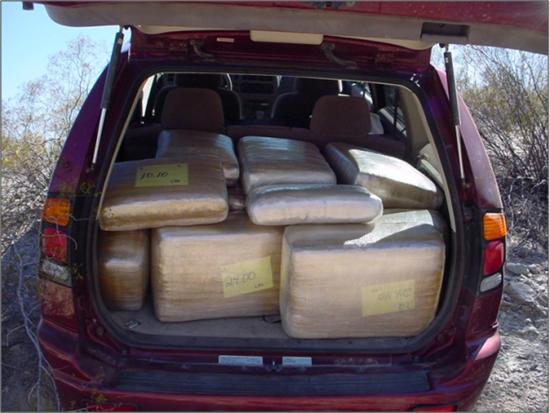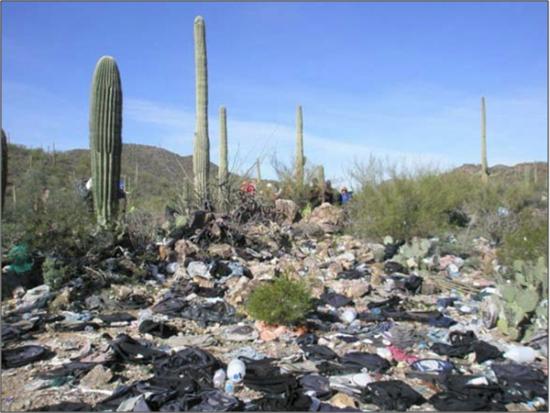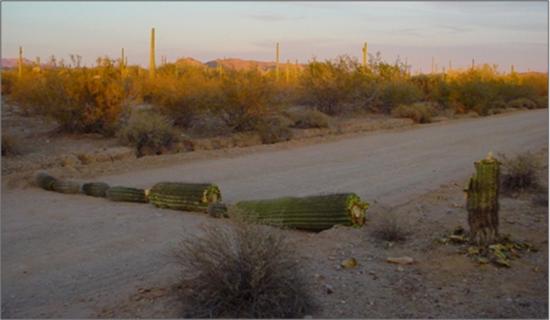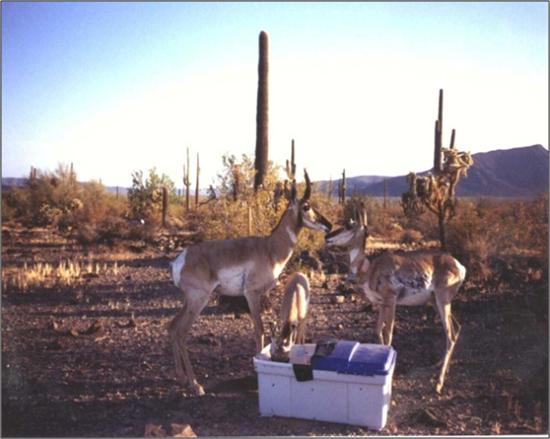|
Issue Page | Problem Overview | Related Links | Videos | Related Information
Blocking Border Patrol Access:
Some of the most dangerous areas along the southern border are the 20.7 million acres of Department of the Interior (DOI) and U.S. Forest Service (USFS) land. This includes 4.3 million acres of “Wilderness areas” where activities such as the use of motorized vehicles and construction of roads and structures are prohibited.Documents show that the Department of the Interior and the U.S. Forest Service have consistently and actively taken steps that prevent the Border Patrol from securing our nation’s borders on federal lands. According to internal memos, DOI officials have asserted that the Wilderness Act of 1964 trumps border security legislation passed by Congress.
|
| As a result, Border Patrol agents are being forced to wade through bureaucratic red tape just so they can do the job Congress has mandated: gain operational control over the U.S. border. The Department of the Interior is hindering border security efforts on federal lands by preventing the use of motorized vehicles, requiring DHS to complete lengthy and expensive environmental analysis, and at times literally locking out Border Patrol agents to prevent their access to some areas. |
National Security Threats:
Federal lands along the border are specifically targeted by criminals, drug smugglers, human traffickers and even terrorists because they are remote, uninhabited and less frequently patrolled by Border Patrol agents.
These security gaps along the border make the United States increasingly vulnerable to terrorists, who can take advantage of the thousands of existing smuggling routes on federal land. According to the Department of the Interior’s FY 2003 Public Lands Threat Assessment Report:
“Virtually all of the lands managed by Department of The Interior (DOI) along the Arizona/Mexico border are sparsely populated with easy access into the United States from Mexico. Terrorist wishing to smuggle nuclear - biological - or chemical (NBC) weapons into the United States from Mexico could use well-established smuggling routes over DOI managed lands.”
Violence on Federal Lands:
National parks and forests have become some of the most dangerous and violent areas along the border where shootings, robberies, rapes, murders, kidnappings and car-jackings frequently occur. Drug Trafficking Organizations use federal lands along the border to smuggle drugs such as marijuana, cocaine, black tar heroin and methamphetamines into the U.S. Along the southern border, 80% of drug smuggling occurs between official border entry points. Drugs are frequently stuffed into vehicles and taken across the border. The drugs are collected and then the vehicles are abandoned.
Because of the high crime rates, many of these areas have been rendered unsafe for entry by U.S. citizens, including land managers and employees. The security risks are so great that the National Park Service even warns visitors about them on its website for Big Bend National Park. | 
Click to enlarge |
Tragically, Border Patrol agents, park rangers and private American citizens have been killed on federal lands along the border. For example:
- On August 9, 2002 Park Ranger Kris Eggle, age 28, was shot and killed in the line of duty while pursuing members of a Mexican drug cartel who had crossed the U.S. border into the Organ Pipe National Monument.
- On January 19, 2008 Border Patrol Agent Luis Aguilar, age 31, was killed in the line of duty after being intentionally hit by a vehicle that had illegally crossed into the U.S. through the Imperial Sand Dunes (BLM land).
- On March 28, 2010 Arizona Rancher Rob Krentz was shot and killed on his ranch by a person who had illegally entered and exited the U.S. through the San Bernardino Wildlife Refuge.
Environmental Damage:
| Although DOI’s stated goal is to protect the environment, its obstruction of the Border Patrol’s enforcement operations is actually resulting in increased environmental harm because criminal trafficking operations are drawn to areas where border enforcement is hampered. National parks and forests have been turned into personal landfills for illegal border crossers. Clothes, blankets, backpacks, water bottles, trash bags and empty food cans are frequently found discarded on federal land. This illegal dumping of trash along the border threatens wildlife, destroys habitat and attracts disease carrying insects such as mosquitoes and flies. Human waste is a growing problem that contaminates the drinking water for nearby residents. | 
Click to enlarge |
Criminals also frequently destroy the vegetation on DOI land - vegetation that is supposed to be protected. Cacti are cut down to create road barriers in order to stop park visitors, often resulting in robbery and auto theft. They are also destroyed to obtain drinking water. The destruction of these cacti harms the water supply, surrounding vegetation and wildlife.
In addition, catastrophic wildfires are another concern along the southern border. These fires endanger lives, destroy plants and kill endangered species. According to local firefighters, nearly 75% of the fires in Coronado National Park are started by illegal border crossers. Most are caused by discarded matches, cigarettes and unattended campfires. | 
Click to enlarge |
Blocking Construction of Electronic Surveillance:
Security infrastructure enhancements, such as SBInet towers with long range cameras and sensors, are prohibited in wilderness areas regardless of the strategic importance of their placement. SBInet (also known as the virtual fence) seeks to provide a "common operating picture" of the border. Barring towers from needed sites in Wilderness areas will leave large sections of the border unmonitored.
| Border patrol has also been told they cannot construct towers if there are endangered Sonoran pronghorn antelope in the area. A BLM official wrote in an email to DHS regarding testing for placement of the SBInet towers that: “A biological monitor shall be present at the proposed location of AJO-004 to monitor for Sonoran Pronghorn prior to any disturbance/drilling. The monitor must have experience with observing pronghorn. The monitor will scan the area for pronghorn and if observed, the drilling will be delayed until the pronghorn moved of their own volition. The pronghorn cannot be ‘encouraged’ to vacate the area.” Source: August 1, 2008 e-mail from Jim Anderson, BLM to Gray Garland, DHS | 
Click to enlarge |
Extorting Mitigation Funds:
Not only is DOI blocking efforts to secure the border, but it is even charging DHS money in order to conduct border patrol operations on its land.
DHS has paid DOI over $9 million since 2007 to mitigate the purported “environmental damage” of protecting our border. Per a Memorandum of Agreement signed in 2009, DHS agreed to hand over an additional $50 million for mitigation funds to DOI; however DOI has yet to disclose how exactly these funds will be used.
This extortion is taking valuable money away from border patrol that is needed to safeguard our nation.
|
|
No comments:
Post a Comment